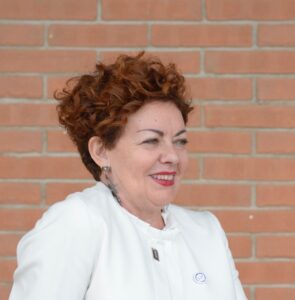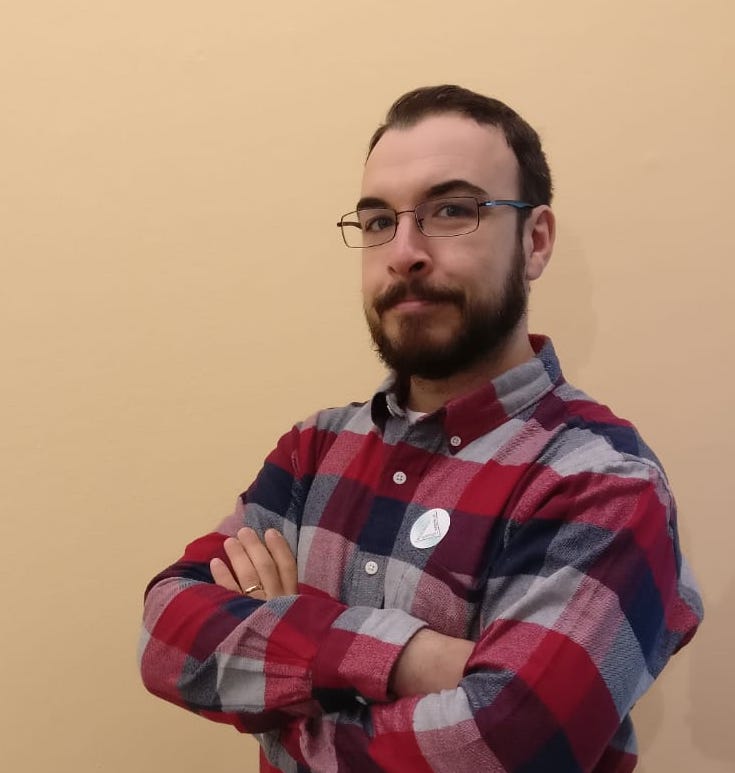The first exhibition I saw managed by Marina Bastianello dates back to 2013 and, again in her gallery, I was able to discover the work of Ruben Montini, who at the time was not yet known to the general public. From then on, Marina raised other young artists who are now part of the great circle of contemporary art. Marina reminds me very much the gallerist Ileana Sonnabend, who just like her was moved by great passion and the ability to empathize with people, collectors but above all artists. In Mestre, the Marina Bastianello Gallery takes a different step from the other Venetian galleries, in terms of courage and themes but above all in the decision to focus on young artists.

Marina Bastianello’s portrait
Francesco Liggieri: To make it clear who you are without introducing yourself, I would like you to describe yourself with the title of an artwork.
Marina Bastianello: All the paintings by Frida Kahlo.
How did the idea of an art gallery in Mestre come about?
Before embarking on the path of contemporary art, I worked in the field of interior design in a shop in Venice, but together with my former husband we were collectors and one day Massimo (the husband ed), decided to open a gallery in Mestre, the Anti gallery which was aimed at the modern, and he asked me to follow him in that adventure. So, I decided to leave my job, which I loved so much, and to follow him. After not too much time and a great commitment, Massimo proposed me to open a gallery aimed at young emerging artists in via Torino in Mestre, the Massimo De Luca Gallery. In both cases, we never wanted to look for a space in Venice, despite the fact that many people know us in the lagoon, but we decided that Mestre was the right place. I have always thought of Mestre as an incubator with great potential, and I also wanted to “educate” a territory not used to contemporary art. In 2012 we opened the Massimo De Luca Gallery, of which I was the director with an exceptional mentor like Andrea Bruciati. In 2019 the gallery took my name and here we are today with the Marina Bastianello Gallery.

L’ultimo degli stronzi, Antonio Guiotto solo show, 03/12/2022 – 31/01/2023, installation view, photo Antonio Guiotto, courtesy Marina Bastianello Gallery
Is there any gallery owner or collector from the art history that you have considered as a starting point for your professional career?
At the beginning of my career as a gallery owner, I always looked at the Monitor Gallery in Rome as a model. At the time it was a multidisciplinary gallery that I really liked.
What has contemporary art become today? Does it still exist in your opinion?
That’s what I’m wondering too. I must say that I see it more oriented towards research and experimentation in young artists who ask themselves questions, but not in the same way in more experienced artists.

Sono proprio io, ma diventato pazzo, Paolo Pretolani solo show, 29/11/2021 – 22/01/2022, installation view, photo Francesco Piva, courtesy Marina Bastianello Gallery
Fairs are still an important opportunity for a gallery: in Italy what are the essential ones in your opinion?
Fairs, as far as I’m concerned, make artists, especially the young ones, known. Many of my collectors know that I always bring unknown artists to fairs; I can also bring well-known artists, but they are always joined by emerging ones. Several Italian fairs work, but I believe that the one that makes the difference in terms of trends on the contemporary art market is Artissima.

Teen dream, Boris Contarin solo show, 28/06 – 28/08/2021, photo Giacomo Cosua, courtesy Jaguar Italia e Artissima
Why don’t Italian galleries invest in young artists as it happens abroad?
The main problem of the Italian galleries is the little support from the state; compared to foreign galleries they can’t count on public funding. This applies to both galleries and young artists. We carry out our projects in self-production, we have no help of any kind in this sense.
What would you recommend to those who want to start a professional career like yours?
One should join me for a few years (laughs). I think that taking this path means having a lot of passion, without which you can’t go anywhere.
Info:
www.marinabastianellogallery.com

Independent artist and curator. Founder of No Title Gallery in 2011. I observe, study, ask questions, take informations and live in contemporary art, a real stimulus for my research.






NO COMMENT